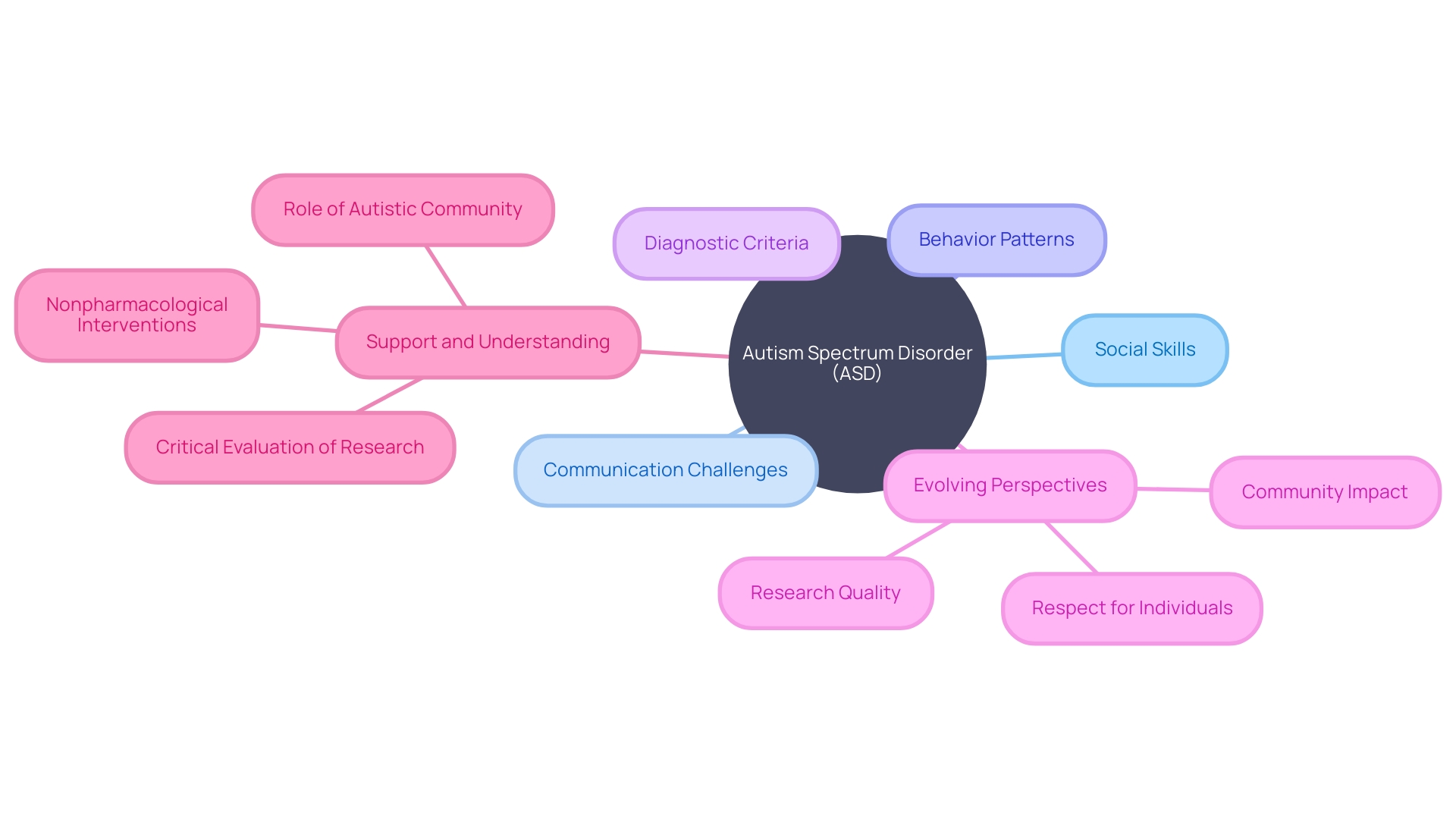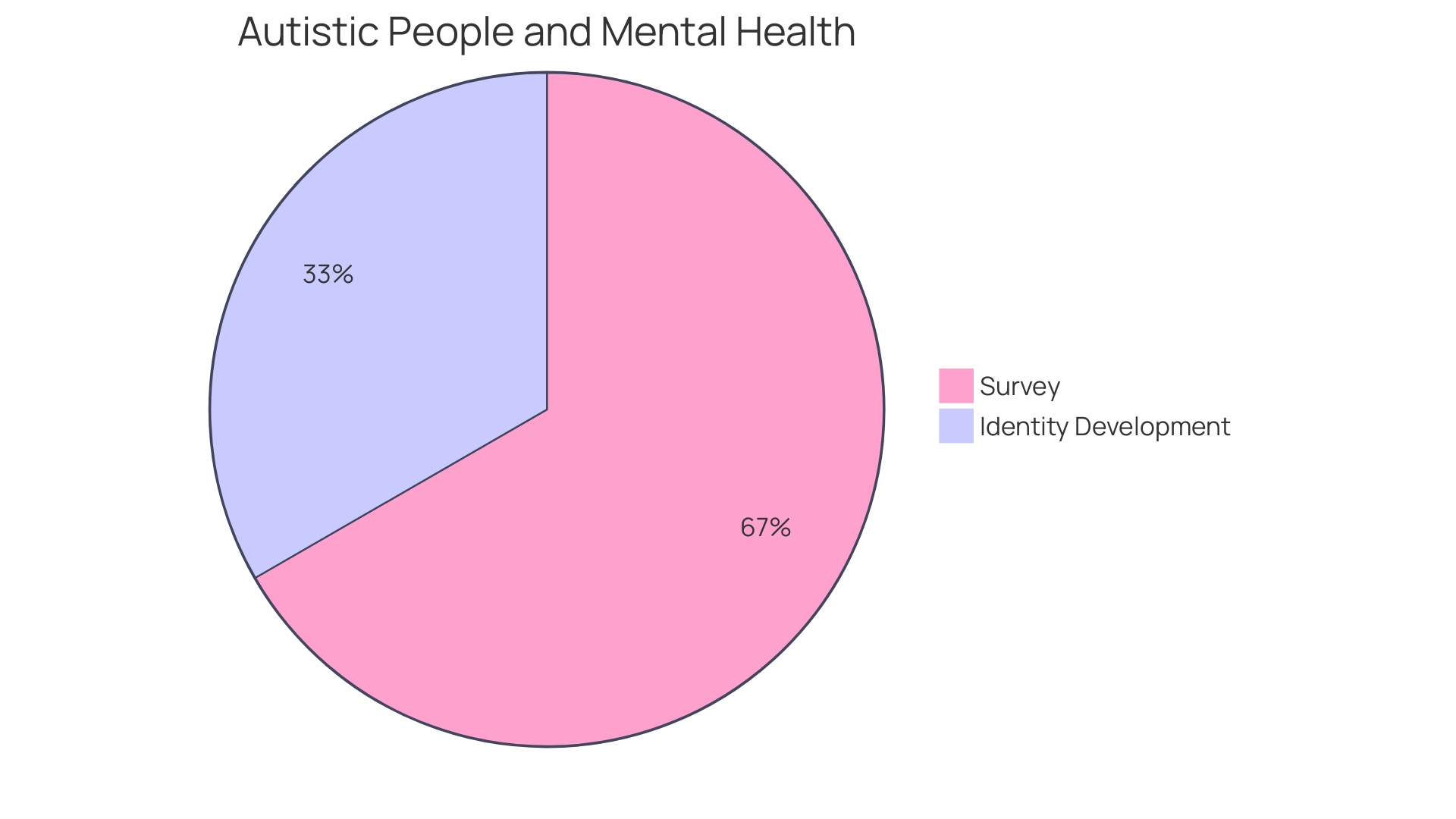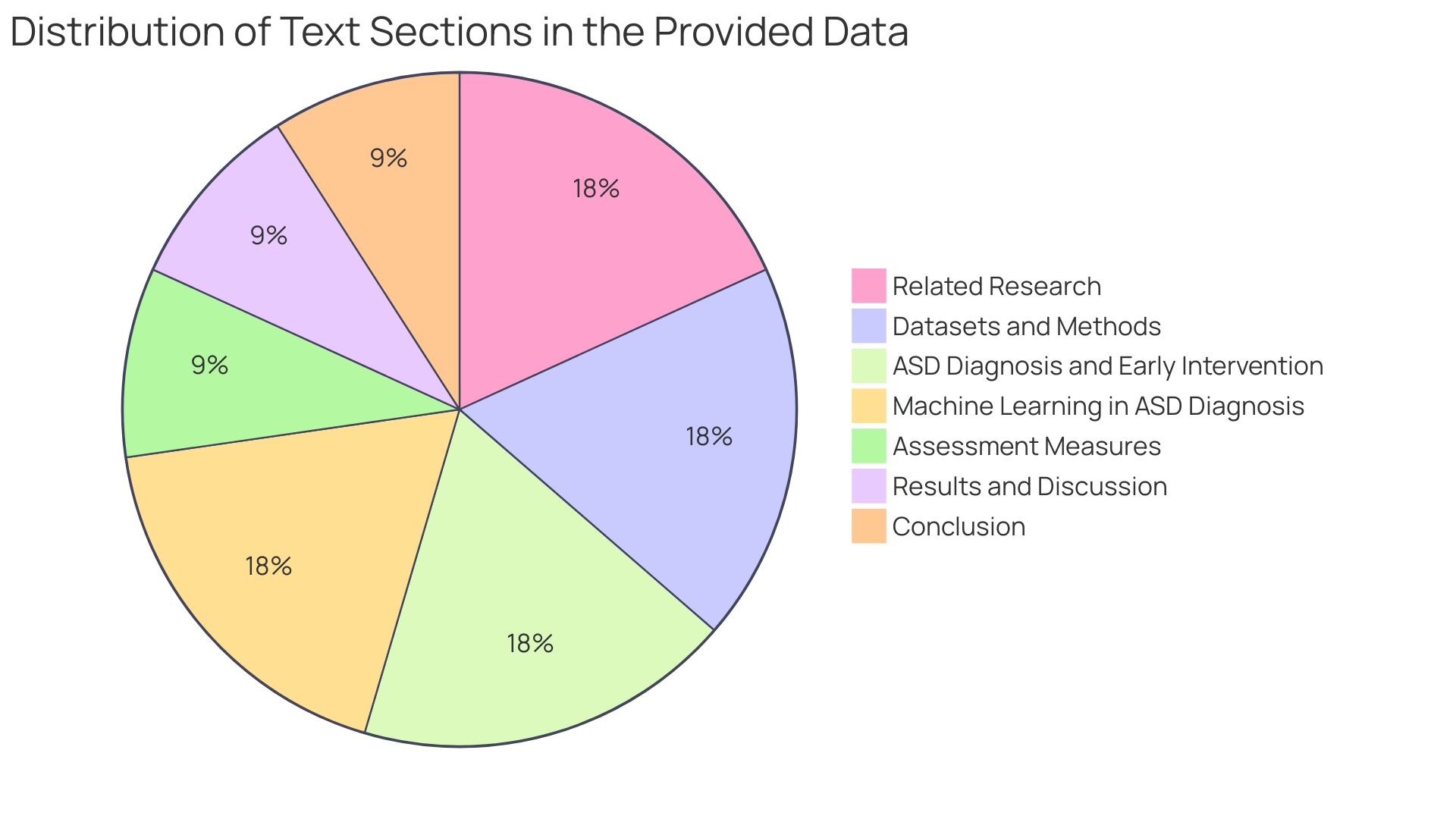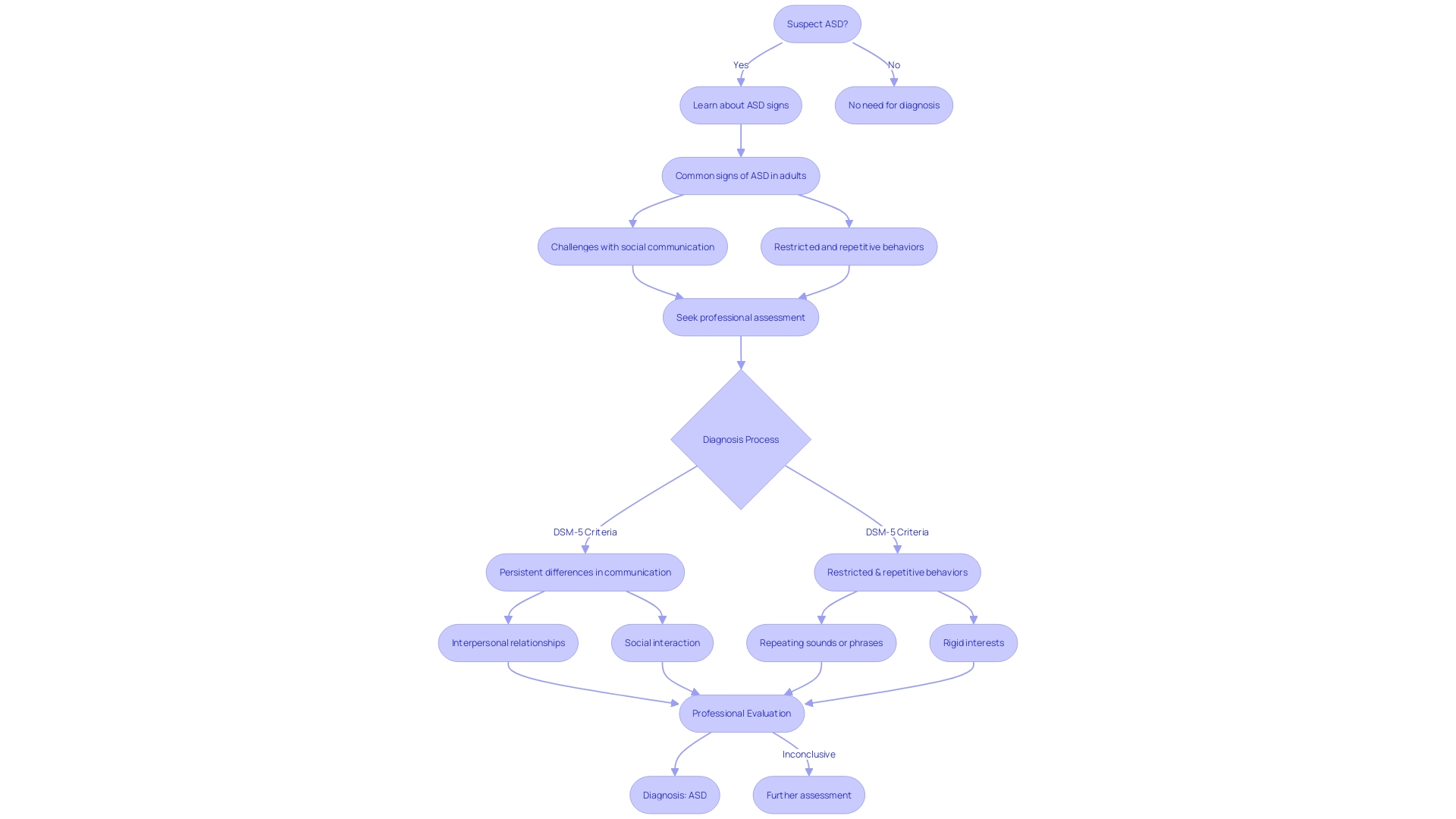Introduction
Autism Spectrum Disorder (ASD) is a complex condition that encompasses a diverse array of challenges in social skills, communication, and behavior. Each individual's experience with ASD is unique and persistent throughout their life, shaping the way they interact with the world. Recognizing this diversity is crucial, as it highlights the need for tailored approaches to support and communication.
The diagnostic criteria for ASD, outlined in the DSM-5, provide healthcare professionals with a tool to identify signs of the spectrum. However, it's important to acknowledge that self-identification and community acceptance also play a role, and an official diagnosis may not be necessary for everyone. As our understanding of ASD evolves, it becomes essential for society to broaden its understanding and provide better support for those on the spectrum.
By fostering an environment of acceptance and understanding, we empower both individuals with autism and the wider community to thrive together.
DSM-5 Criteria for Autism Spectrum Disorder
Autism Spectrum Disorder (ASD) encompasses a diverse array of conditions that manifest in unique challenges with social skills, communication, and behavior. These challenges are not the same for everyone; instead, they vary significantly from person to person and persist throughout life, shaping the way individuals with a condition called autism interact with the world. Recognizing the diversity within the range of developmental conditions is crucial, as it underscores the importance of tailored approaches to support and communication that resonate with each person's experience.
The diagnostic criteria for ASD, as outlined in the DSM-5, are a tool used by healthcare professionals to identify signs of the spectrum. These criteria are characterized by persistent difficulties in social interaction and communication, and by specific patterns of behavior that are repetitive and restricted in nature. However, it is important to acknowledge that self-identification and community acceptance play a role for many, and the pursuit of an official diagnosis is a personal choice that may not be necessary for everyone.
The way we conceptualize and diagnose ASD is evolving. Changes in clinical definitions, such as those proposed in the ICD-11, highlight the need for a nuanced understanding that goes beyond observable behavior to include a person's internal experiences and identity. This shift acknowledges that autism is not solely a medical condition but rather an aspect of a person's identity, one that can be embraced as part of their unique perspective on the world.
In light of these evolving perspectives, it's crucial for society to broaden its understanding of autism. From friends and family to educators and colleagues, a more informed approach can lead to better support for those on the spectrum. As we continue to learn and share knowledge about ASD, we empower not only those directly affected but also the wider community to foster an environment of acceptance and understanding.

A. Persistent Deficits in Social Communication and Social Interaction
Autism Spectrum Disorder (ASD) presents a range of communication and interaction challenges that can significantly affect individuals' lives. These challenges often manifest in the understanding and use of nonverbal cues such as gestures and facial expressions, which are crucial in human interaction. Furthermore, developing and maintaining relationships can be strenuous, with many experiencing atypical or restricted interpersonal interaction.
In the context of interpersonal communication, research has highlighted that autistic adolescents are more likely to experience depression related to impaired interaction. It is important to mention that mood disorders in individuals with developmental challenges may not only present as emotional distress but can also be expressed through behavioral difficulties. These findings highlight the complex connection between connectivity and mental health for those on the spectrum.
A closer examination of the experiences of people with high functioning autism, who may have greater cognitive abilities and less noticeable speech and communication challenges, unveils that interpersonal engagement continues to be a significant obstacle. Despite experiencing less severe symptoms, these people still encounter significant difficulties in understanding social subtleties and establishing enduring connections, which can affect their mental and emotional welfare.
The idea of 'compensation' is especially significant, where autistic people utilize strategies, consciously or unconsciously, to conceal autistic traits or to embrace neurotypical behaviors. This adjustment, however, can be demanding and may not be visible to external observers, often leading to an underestimation of the difficulties faced by people with autism.
Considering the life transitions for people with autism, such as the shift from school to post-secondary environments, it's clear these changes can be especially daunting. The unfamiliarity of new settings and routines adds another layer of difficulty, emphasizing the need for supportive interventions that recognize their unique perspectives and capabilities.
Autism's influence extends beyond the person to the community and society at large. It's critical to foster a deeper understanding and accommodate the diverse needs of those with ASD. By doing this, we not only promote their personal growth but also enhance our shared societal structure.
B. Restricted, Repetitive Patterns of Behavior, Interests, or Activities
Autism Spectrum Disorder (ASD) is characterized by a range of behaviors that include persistent differences in communication, social interaction, and by restricted and repetitive behavior, patterns, activities, and interests. These behaviors are outlined in the Diagnostic and Statistical Manual (DSM-5), which clinicians use for diagnosis. Individuals with ASD may exhibit repetitive behaviors, such as echolalia—repeating sounds or phrases—or may have a strong preference for sameness, making transitions or changes in routine challenging. Some may develop rigid or highly restricted and intense interests. Sensory sensitivities are also widespread, with people experiencing hypersensitivity or significantly reduced sensitivity to sensory input.
The understanding of ASD as a 'spectrum condition' acknowledges its diverse manifestations and degrees of severity. Current research, according to the Centers for Disease Control and Prevention (CDC), estimates that ASD may affect as many as 1 in 36 individuals. While there is no single known cause for the condition, differences in brain structure or function have been observed. Brain scans reveal variations in the brains of those with ASD compared to neurotypical development. Genetic factors are also under investigation, with some families showing patterns of autism spectrum or related disabilities, suggesting a genetic basis.
Recent studies, such as the one conducted by The Center for Discovery, leverage large datasets and advanced techniques like artificial intelligence and machine learning to predict behaviors in individuals with ASD. This innovative research could lead to more personalized strategies to mitigate the impact of challenging behaviors. Furthermore, a study featured in 'Science Advances' emphasizes a 'genetics-first' strategy, which has the potential to transform the comprehension and management of developmental disorders. Researchers are using transport-based morphometry (TBM) to reveal brain structure patterns that correlate with genetic variations linked to autism.
Early diagnosis plays a critical role in enabling access to resources that support people with ASD to live fulfilling lives. It often begins with parents voicing concerns to a primary care physician and proceeds with referrals to specialists for comprehensive evaluation. Understanding the diverse ways in which ASD manifests, including the presence of restricted, repetitive behaviors and sensory sensitivities, is crucial for parents, caregivers, and professionals in providing appropriate support and intervention.
Levels of Support and Severity Ratings
Autism Spectrum Disorder (ASD) is a complex condition, presenting in a variety of ways and degrees of severity. It is defined by a certain set of behaviors affecting communication, social interaction, and behavior. The variability of these symptoms means that each person with ASD may need different levels of support. Severity ratings are utilized by professionals to determine the extent of support required, which are crucial for developing tailored intervention strategies. It's important to mention that these ratings are not just about challenges; they acknowledge the unique strengths and contributions of each person with ASD to their communities.
The importance of early and accurate diagnosis cannot be exaggerated, as it allows access to crucial resources and assistance that enable people with ASD to flourish. This is echoed by the current research which reveals that 8 out of 10 people with autism report mental health issues, underscoring the need for a society that understands and provides for their needs. Recent advancements in machine learning technologies offer promising new avenues for enhancing the accuracy and timeliness of ASD detection and diagnosis, by analyzing complex datasets and identifying patterns that might elude traditional methods.

Distinguishing Autism from Other Conditions
Accurately identifying spectrum disorder (ASD) is a critical step that distinguishes it from other conditions with overlapping symptoms. The complexity of ASD diagnosis necessitates not only a thorough assessment but also a multidisciplinary approach, as evidenced by a recent case study published in the Journal of Personalized Medicine. This study highlighted the successful reduction of severe ASD symptoms in 4-year-old dizygotic twins through personalized, non-pharmacological interventions by a team of specialists. The study underscores the importance of considering individual differences, even among siblings, when diagnosing and treating ASD.
In the realm of diagnostics, recent advancements have been made in the development of machine-learning models, such as the AutoMedia, which boasts an impressive 80% accuracy rate in identifying children with a developmental disorder under the age of two. This innovative tool exemplifies the potential of technology to augment the diagnostic process, utilizing parameters that can be gathered without invasive assessments in very young children.
Furthermore, recognizing the neurodiversity-affirming movement is crucial in the discussion on individuals with diverse neurological conditions. This perspective reframes autism as a natural variation of the human brain, emphasizing the need for supportive environments rather than viewing autism as a disorder that necessitates a cure. As a result, diagnostic practices are evolving to include a person-centered and strengths-based approach, recognizing the myriad contributions of individuals with neurodiversity to society.
The diagnostic journey for ASD is complex, and the stakes are high, given the increased risk of co-occurring health conditions and reduced life expectancy for autistic individuals. With an expanding collection of research and technology assisting in earlier and more accurate diagnoses, there is hope for enhanced quality of life and support for those on the spectrum and their families.
Assessment and Diagnostic Process
Identifying autism spectrum disorder (ASD) is a nuanced process that relies on contributions from multiple sources. Not only do parents and caregivers provide crucial insights, but teachers and specialists contribute through direct observations and interaction. While some individuals within the autistic and neurodivergent community embrace self-diagnosis—understanding the challenges and limitations of medical testing—others seek an official diagnosis to validate their experiences and to communicate their needs to those around them.
Innovative research is paving the way for earlier and more precise detection methods. One example is the integration of a parent-child block-play protocol with an advanced deep learning framework. This novel approach is designed to analyze subtle social and cognitive development cues during play, which could be indicative of ASD.
Researchers and clinicians draw from the latest studies, including randomized controlled trials, to inform intervention strategies. However, intervention research often faces scrutiny over methodological rigor, which impacts the understanding of their effectiveness and safety. The Interagency Autism Coordinating Committee (IACC) has a pivotal role in enhancing research coordination, recognizing the value of input from the community affected by autism itself, which has been instrumental in advocating for higher quality and ethically responsible research.
Statistics indicate a pressing need for improved diagnostic criteria and methods. The recent conceptualization of ASD in the ICD-11, which includes a broader range of symptoms not necessarily observable, has sparked debate over its clinical utility and the necessity of refining diagnostic practices to ensure they are not only precise but also respectful of individuals with ASD. With a growing prevalence of autism diagnoses, the importance of accurate, respectful, and accessible diagnostic methods cannot be understated.

Importance of Comprehensive Evaluations and Observations
The journey to accurately diagnose Autism Spectrum Disorder (ASD) is a complex one, involving a blend of detailed evaluations and keen observations. These steps are more than just procedures; they are the means to uncover the full spectrum of an individual's abilities and challenges. By integrating both the developmental history provided by parents or caregivers and the behavioral observations by professionals, a comprehensive picture emerges. This approach aligns with the standards set by the American Psychiatric Association's DSM-5, which emphasizes the need for a multi-faceted assessment.
The diagnostic process for ASD often includes the use of various tools, but it's critical to recognize that no single tool is definitive on its own. For children with ASD, who may also have co-occurring emotional and behavioral issues, the stakes are high. These children are particularly susceptible to being excluded in settings like school and community activities, which are crucial for their mental health and inclusion.
Recent shifts in research methodologies, moving from quasi-experimental designs to randomized-controlled trials, aim to provide more reliable data to inform interventions in the field of autism. This change emphasizes the significance of accurate, evidence-based diagnoses that take into account both the risk of biases and the validity of interventions in society. As indicated by experts, the research landscape is fragmented, making it crucial to critically evaluate intervention studies for their effectiveness, potential harms, and the extent to which they reflect the needs and values of individuals with autism.
Indeed, as Dr. David (Dan) R. Offord poignantly stated, fostering an environment where children with disabilities can engage fully and fairly in all aspects of life is not just a matter of mental health—it’s a cornerstone of equity. It's about recognizing the unique strengths and unmet needs of these children and providing the necessary support for their caregivers to facilitate healthy development and family well-being.

Co-occurring Conditions and Their Impact on Diagnosis
People on the spectrum may exhibit various coexisting conditions that go beyond the fundamental features of social communication difficulties and repetitive behaviors. It's not uncommon for people with Autism Spectrum Disorder (ASD) to experience additional cognitive, language, or mental health challenges. For instance, while autism is not the equivalent of intellectual disability, it is important to acknowledge that approximately half of those affected by this condition may have coexisting intellectual challenges. This duality requires a nuanced approach to diagnosis and intervention, acknowledging the unique profile of each individual with the condition.
Moreover, mental health disorders can intersect with ASD, further influencing the diagnostic process and the strategies implemented for support. Conditions such as Attention-Deficit/Hyperactivity Disorder (ADHD) often co-occur with another condition, and while some characteristics of these conditions might seem contradictoryâlike the love of routine in one condition versus the desire for novelty in ADHDâtheir co-occurrence is well-documented and calls for tailored care.
The intricacy of the condition is intensified by its neurodiversity and the range of experiences it encompasses. From heightened sensitivities to the environment to deeply focused interests, the profile of the condition is as individual as the genetic factors contributing to its manifestation. Understanding the complete range of autism spectrum disorder and its potential coexisting conditions is vital for providing effective support and intervention. This understanding is echoed by agencies such as the Interagency Autism Coordinating Committee (IACC), which aims to enhance research and services through collaboration with various stakeholders, including those within the community affected by autism.
Strategies for Supporting Individuals with Autism
Designing assistance for individuals with autism necessitates a comprehensive strategy that relies on the distinct capabilities and inclinations of each person. Structured environments and visual supports, such as picture boards and electronic tablets, have proven transformative for communication and interaction. For instance, the execution of 100 picture boards in Peterborough, advocated by Mr. Harris from Neurodiversity in Business, has been a lifeline for non-speaking people, allowing them to communicate through images. This technology has been described as 'life-changing,' allowing children like Mr. Harris's son to become internationally recognized as a beacon of hope for similar children worldwide.
Social skills development is another critical area. Role-playing games like Dungeons & Dragons have been shown to foster social connections for those with autism, debunking myths of impaired social motivation or imagination. The organized yet creative gameplay provides a secure environment for people to interact socially and develop self-assurance. In a similar vein, the Picture Exchange Communication System (PECS) has been essential for people like James, assisting him in expressing himself and nurturing his artistic abilities, which resulted in his inaugural exhibition.
Furthermore, inclusive initiatives by organizations such as Emirates and Microsoft offer neurodivergent people opportunities to engage in real-world experiences and employment. Emirates' rehearsal flying experiences prepare children for travel, while Microsoft's neurodiversity hiring program, influenced by SAP's pioneering efforts, provides job coaching and mentorship to ensure success in the workplace.
Despite the aspiration to work, only approximately 3 in 10 people with autism are employed, underscoring the requirement for enhanced awareness and enhanced recruitment practices. The Kevin and Avonte Program and the Adult Autism Health Resources initiative are examples of dedicated projects addressing challenges such as wandering and access to medical care, respectively. Research on adult autism remains limited, and initiatives are underway to understand and support this population better, emphasizing the importance of lifelong support for individuals on the autism spectrum.
Conclusion
In conclusion, Autism Spectrum Disorder (ASD) is a complex condition that presents diverse challenges in social skills, communication, and behavior. Recognizing the unique experiences and needs of individuals with ASD is crucial for tailored support and communication approaches. While the DSM-5 provides diagnostic criteria, self-identification and community acceptance also play a significant role, and an official diagnosis may not be necessary for everyone.
As our understanding of ASD evolves, society must broaden its understanding and provide better support for those on the spectrum.
Individuals with ASD face challenges in social communication and interaction, impacting their mental and emotional well-being. Even individuals with milder symptoms still struggle with social nuances and forming relationships. It is essential to provide supportive interventions that recognize their unique perspectives and capabilities.
ASD is characterized by restricted, repetitive patterns of behavior, interests, or activities. Early diagnosis plays a critical role in accessing resources that support individuals with ASD to lead fulfilling lives. Understanding these behaviors is crucial for providing appropriate support and intervention.
The diagnostic journey for ASD is complex, requiring a multidisciplinary approach. Differentiating ASD from other conditions and considering individual differences is important. Advancements in machine learning and genetics offer promising avenues for improved detection and diagnosis.
Comprehensive evaluations and observations are essential in accurately diagnosing ASD, integrating developmental history and behavioral observations. This person-centered approach recognizes the unique strengths and contributions of individuals with ASD.
Individuals with ASD may have co-occurring conditions, necessitating a nuanced approach to diagnosis and intervention. Understanding the full scope of autism and its potential comorbidities is crucial for effective support.
Supporting individuals with autism requires a multifaceted approach, tailored to their strengths and preferences. Structured environments, visual supports, social skills development, and inclusive initiatives can make a significant difference in their lives.
By fostering an environment of acceptance and understanding, we empower individuals with autism and the wider community to thrive together. Together, we can create a society that supports their well-being and celebrates their unique contributions.




